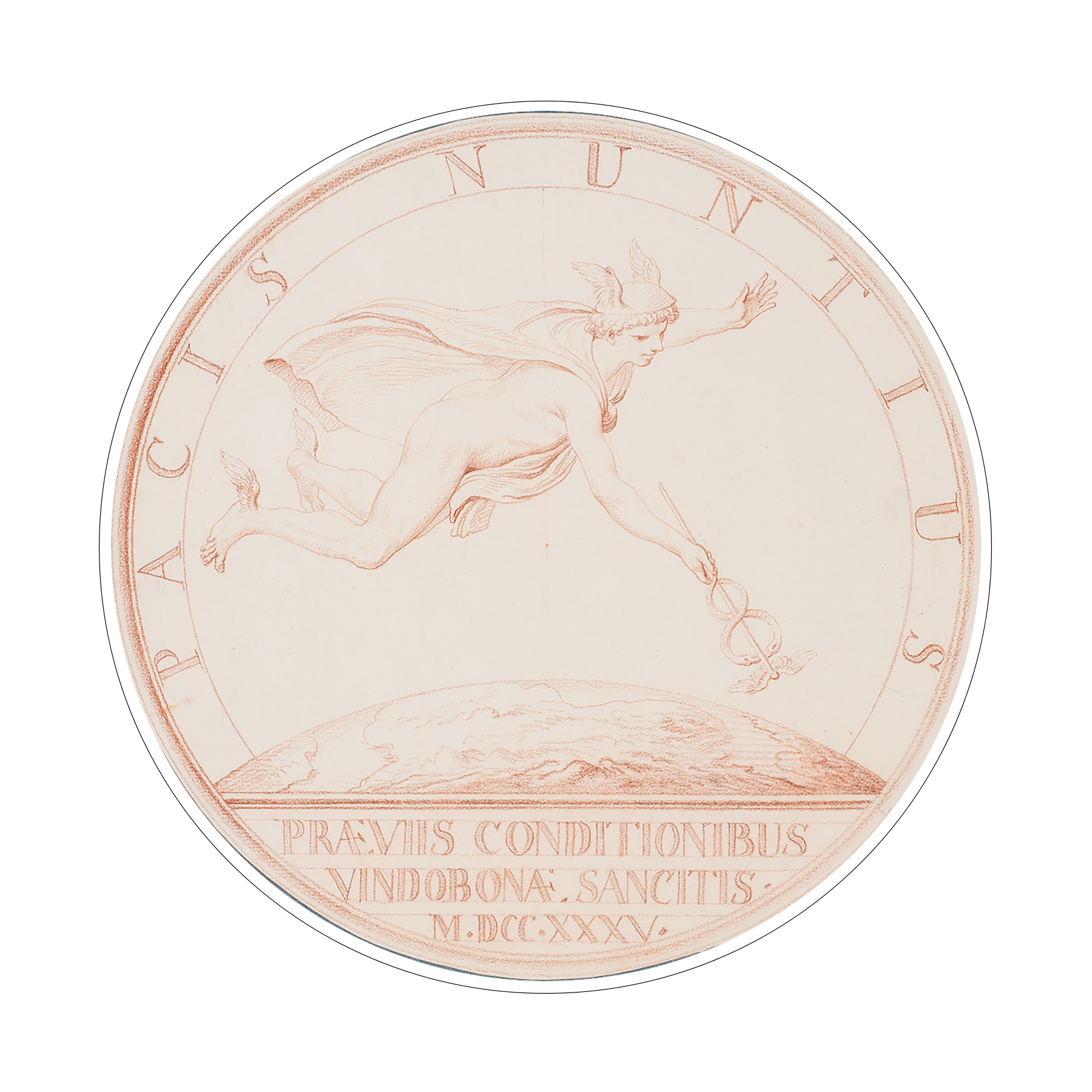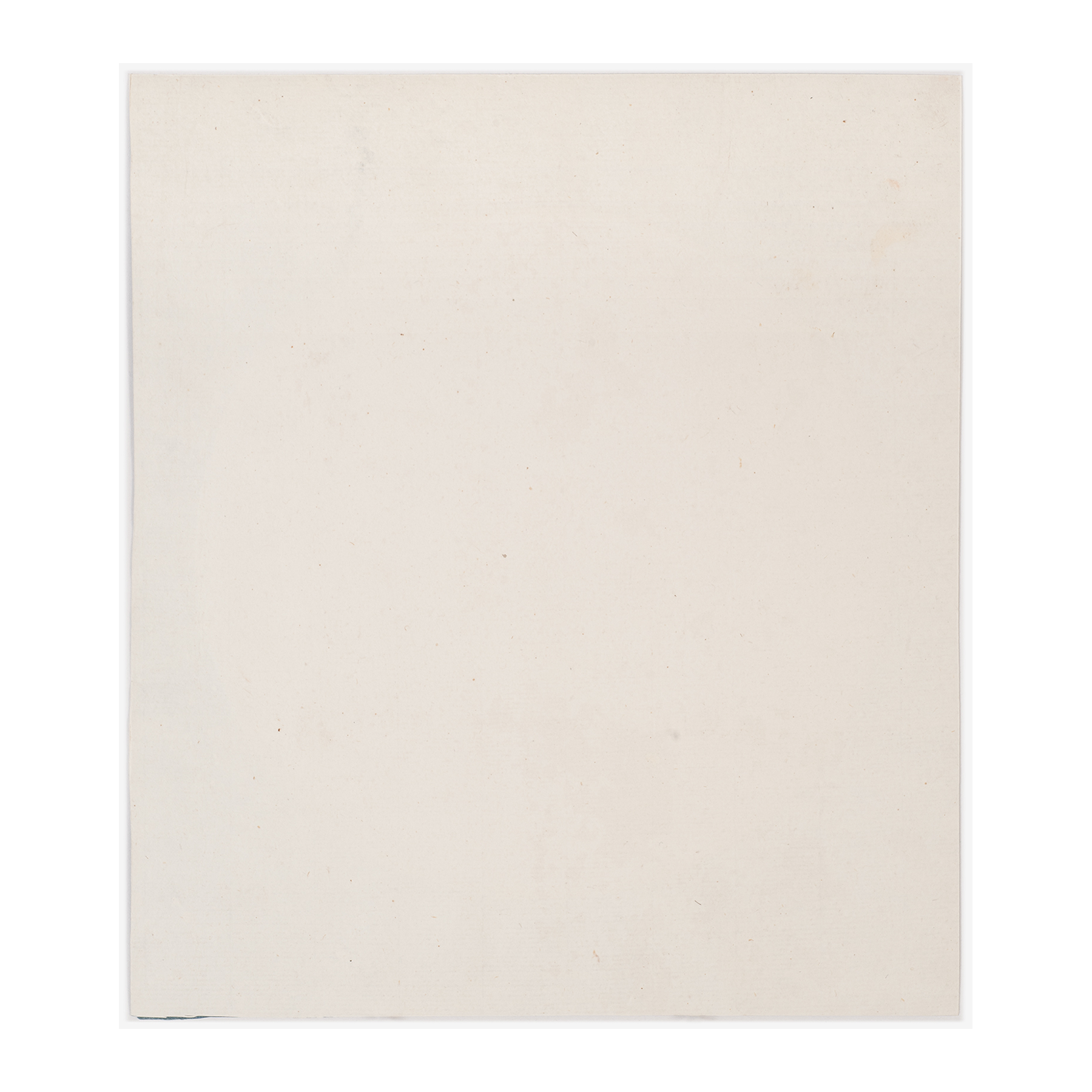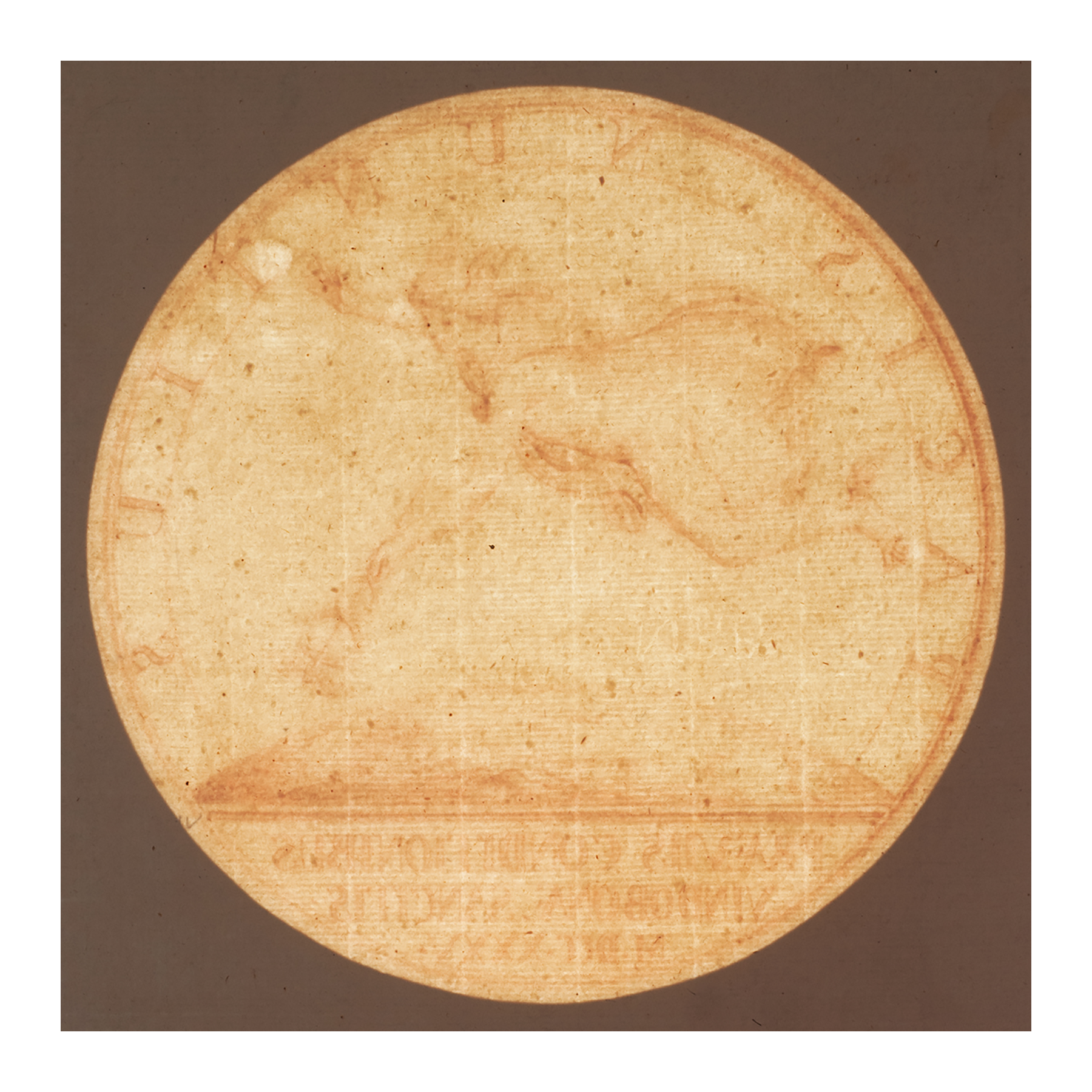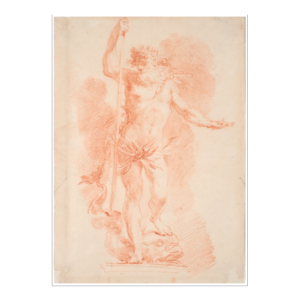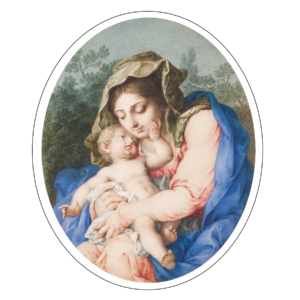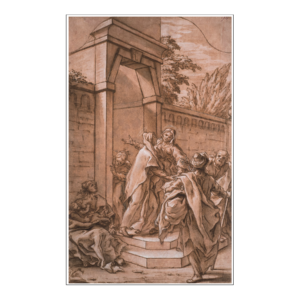Edmé Bouchardon
Chaumont-en-Bassigny 1698 – Paris 1762
Medal design for « Pacis Nuntius » or Preliminaries to the Peace Treaty signed in Vienna (1753)
Red chalk. Circular framing line, in red chalk.
The legend PACIS NUNTIUS and the exergue PRAEVIIS CONDITIONIBUS/ VINDOBONAE SANCITIS/M.DCC.XXV both inscribed in red chalk.
Inscribed with pen and ink Le 24 janvier 1752 remis le dessein am Roittier le fils at the top left of the original mount.
Diameter: 220 mm (8 11/16 in.)
Provenance – Austin Gunnison (1833 – 1915), Cincinnati, Ohio, private collection, California; Paris, Christie’s, 18 March 2004, n° 107.
Literature – Winslow Ames, “Bouchardon and Company”, in Master Drawings, 1975, vol. 13, n°4, p. 379 – 400, n°20.
The son of a sculptor, Edmé Bouchardon was trained in Paris at the Académie Royale de Peinture et de Sculpture, before travelling to Rome in 1723. A student in the French Academy in Rome for nine years, he was called back to Paris by King Louis XV. Throughout his career, Bouchardon was appreciated as a great sculptor, probably the greatest before Coustou, Houdon or Pigalle, and as a remarkable draughtsman, especially famous for his series Les Cris de Paris.
From 1737 to his death in 1762, Bouchardon occupied the prestigious function of official draughtsman of the Académie des Inscriptions et Belles-Lettres, an institution founded under Louis XIV, with a twofold role: to advance and deepen historical knowledge and to support monarchist propaganda by providing ‘inscriptions’. This second role included conceiving medals of the King’s Metallic History and tokens for the royal administration. Between 1749 and 1750, following a series of conferences, Bouchardon was commissioned to design an important group of medals in order to renovate and complement the King’s History following the Peace of Aix-la-Chapelle, after which France’s position was in fact weakened because of the cession of the Austrian Netherlands[1]. This series of drawings, all executed in red chalk, commemorated French military conquests such as Furnes, Ypres, Menin, Tournai or Brussels.
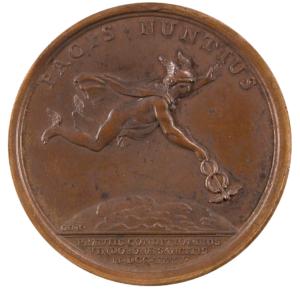
Once the drawings were approved by the secretary of the Petite Académie, Claude Gros de Boze (1680 – 1753), they were mounted on blue paper to be shown for approval to the King by the State Secretary Jean Philipeaux, comte de Maurepas. Then, they were handed over to director of the Mint, Jules Robert de Cotte (1683 – 1767), who added a release at the top left of the blue mount with the name of the medal engraver and the date he was given the drawing. According to the inscription on our drawing, we know that it was delivered to the medal engraver Charles Norbert Roëttiers (1720-1772) called the Son, on the 24 January 1752 (see medal in the Louvre , inv. OAP 1970). A copy of our drawing, probably executed by the medal engraver, is in an album in the Musée de la Monnaie de Paris (Ms F° 127, n° 70)[2].
Another medal design called the Congress of Soissons (fig. 1, Paris, Bibliothèque Nationale de France, Département des monnaies, inv. 2004.268)[3] bears the same inscription and date of ‘release’ to Roëttiers.
These drawings are all drawn in red chalk and their diameter approximatively measures 8 or 9 inches, whereas their corresponding medals were engraved in a smaller format of 1 5/8 inches. On each medal, the obverse features a portrait of Louis XV whereas the reverse is decorated with a three-elements composition: a corps de devise (the image), a Latin legend and an exergue (the subject of the commemoration, inscribed in the horizontal space under the image, with a date in Roman numerals). A group of eight drawings from this series is nowadays in the Metropolitan Museum of New York[4], amongst which Servado Foedere Sempers (inv. 1979.10.2).
Our medal project Pacis Nuntius (Peace message) represents the god Hermes, easily identified thanks to his attributes, caduceus and winged cask, flying over the earth globe. He is shown pointing his caduceus at Earth to symbolize the preliminaries of the 1735 Treaty negotiated in Vienna in order to terminate the War of the Polish Succession, a European conflict which lasted from 1733 to 1738. The presence of a god from antic mythology in this composition reminds that the King’s Metallic History willingly combined the historic reality of facts with mythological elements in order to magnify the royal person[5].
[1] Edouard Kopp, “Bouchardon’s drawings for medals and jetons: making history at the Petite Académie (1737-1762)”, in Master Drawings, New York, 2009, p. 191-220, p. 199-201.
[2] Recueil de 124 desins (sic) du temps à la sanguine relatifs aux « Médailles sur les faits principaux du règne de Louis XV » Paris, Hôtel de la Monnaie (Ms. F° 127). Cf. Fernand Mazerolle, Les dessins de médailles et de jetons attribués au sculpteur Edme Bouchardon, Paris : E. Plon, Nourrit et Cie, 1898.
[3] Edouard Kopp, « Dessin de médailles et de jetons », in Edme Bouchardon 1698-1752, une idée du beau, Paris, Louvre éditions et Somogy, 2016, p. 191-220, n° 93, p. 180.
[4] Jacob Bean et Lawrence Turcic, 15th – 18th Century French Drawings in the Metropolitan Museum of Art, New York, 1986, n° 18-25.
[5] Idem, p. 191-220.
Condition report – Very good condition. The original blue mount is pasted on the paper and bears some minor tears lower right.
